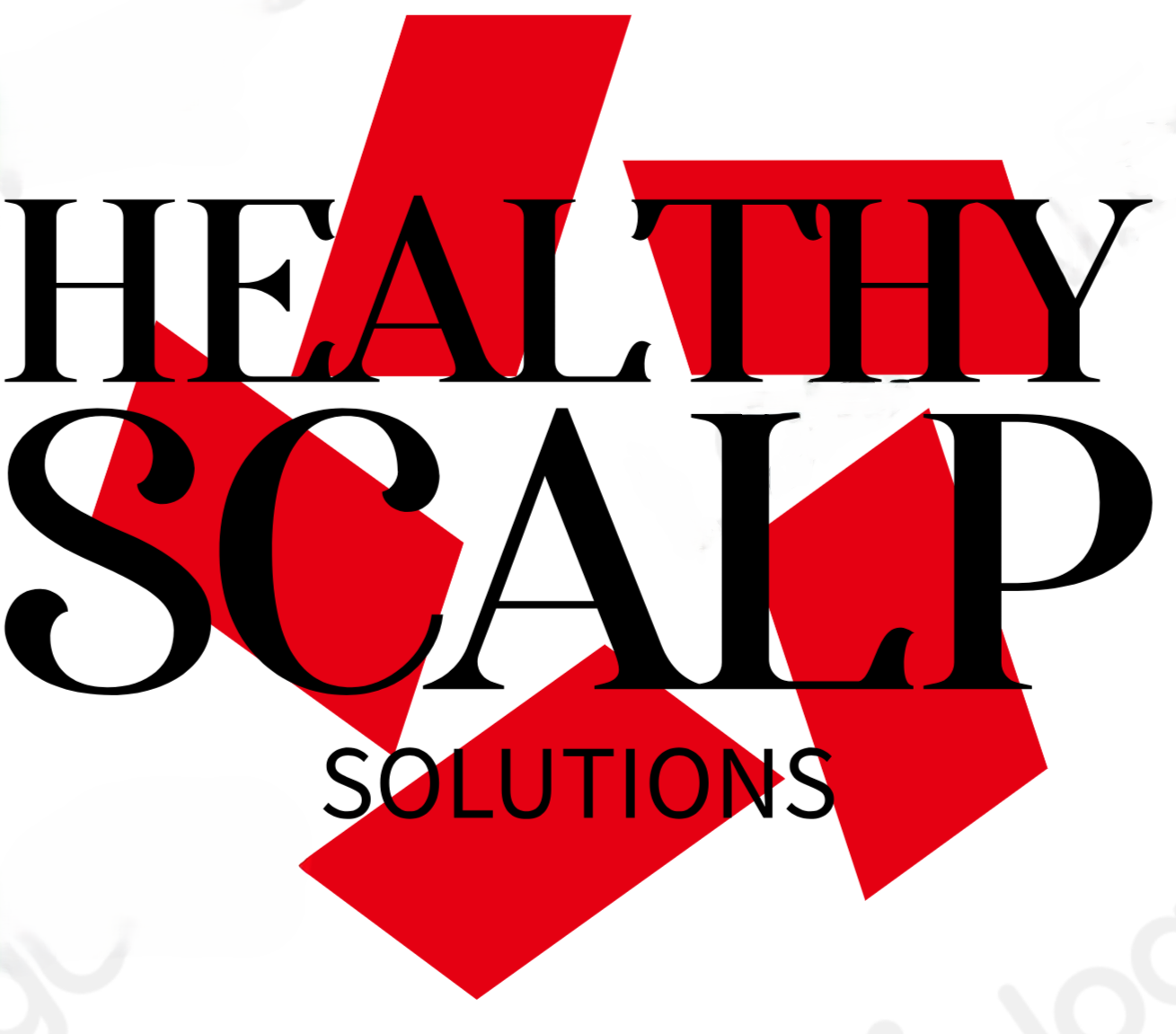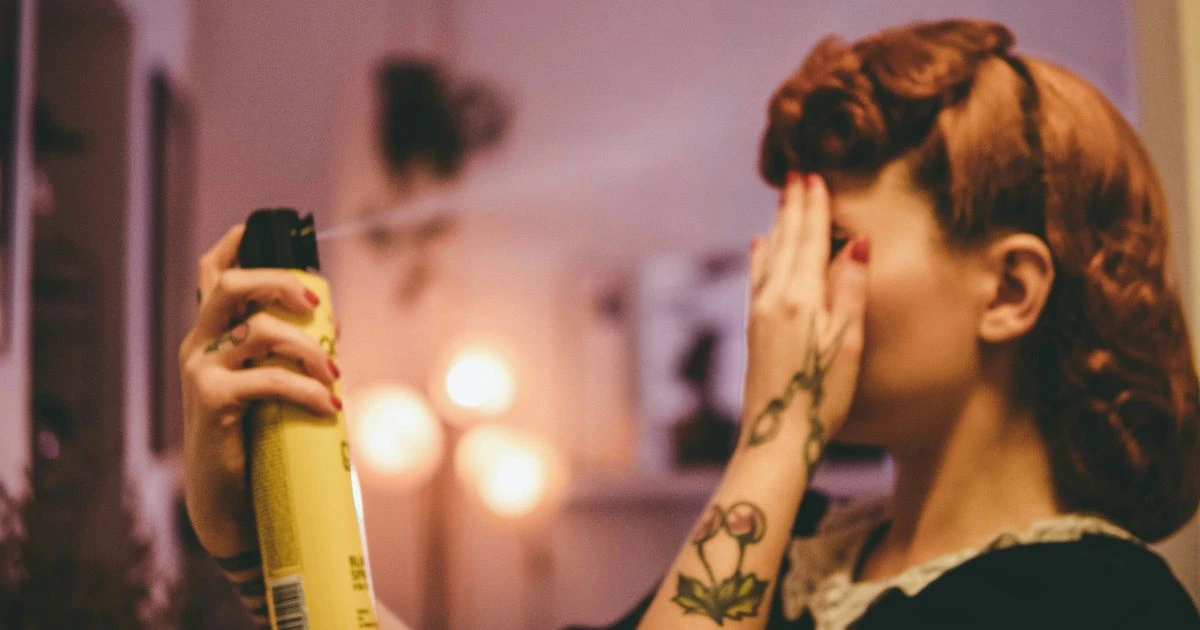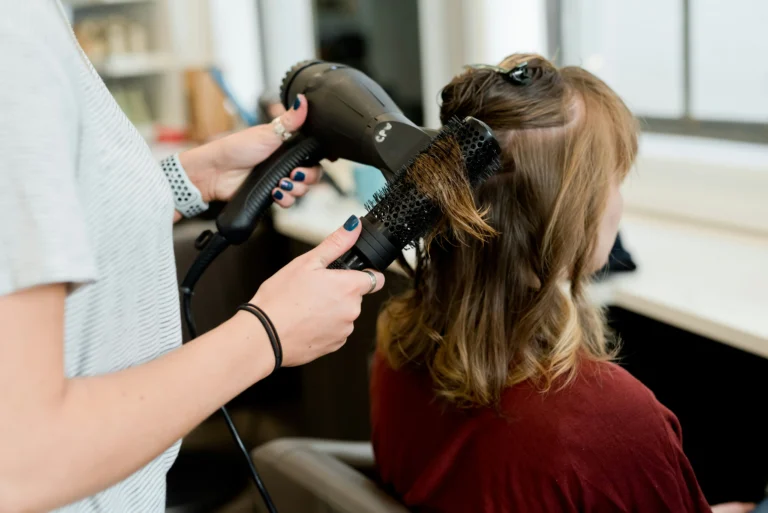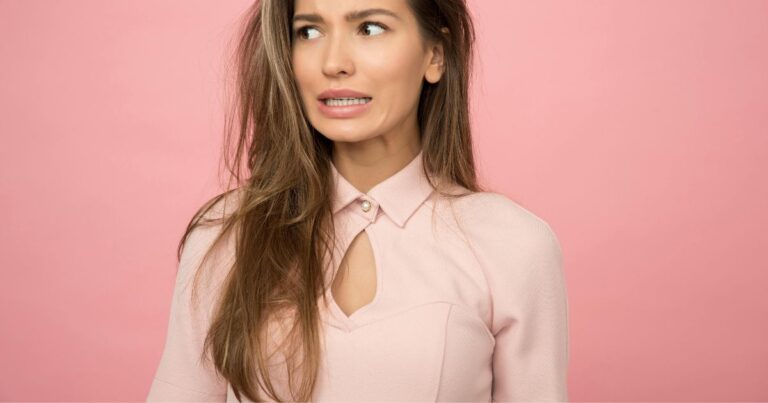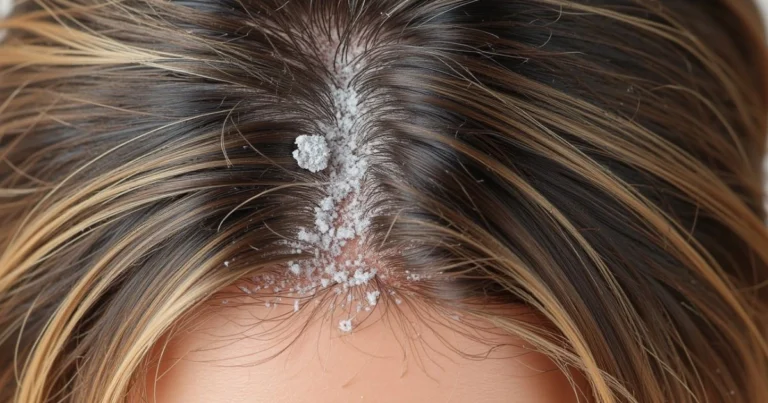Relaxed Hairstyles for Every Occasion: Easy & Stylish Ideas
Table of Contents
Relaxed hairstyles are perfect for any event, from casual days to formal nights. Modern hair treatments focus on keeping your hair healthy while making it smooth and easy to manage. You can choose from sleek bobs, elegant updos, or effortless waves, depending on your style.
Today’s hair techniques are safe and flexible, making relaxed hairstyles a top choice. They simplify your daily routine and let you get creative. This guide shows how relaxed hair lets you express yourself through various, trendy styles.
Key Takeaways
- Relaxed hairstyles provide adaptable options for all occasions.
- Chemical hair treatments have evolved to balance style and hair care.
- You can achieve sleek, polished looks with modern relaxing methods.
- Styling relaxed hair offers freedom to experiment with trends.
- Explore maintenance tips to keep your relaxed hair healthy and vibrant.
Understanding Hair Relaxers: What They Are and How They Work
Chemical straighteners are popular for smoother hair. But how do they work? They change your hair’s structure by breaking its natural bonds. Knowing this helps you choose better for your hair.
The Chemistry Behind Hair Relaxing
Chemical straighteners break bonds in your hair’s cortex. Alkaline relaxers and acid-based formulas do this. They make your hair lay flat when reformed. This change lasts until your hair grows out.
Different Types of Hair Relaxers
- Lye relaxers: Strong for coarse, tightly coiled hair. Sodium hydroxide makes results last long.
- No-lye relaxers: Gentle for fine or sensitive hair. Potassium or guanidine hydrochloride is used.
- Cream vs. liquid: Cream relaxers are better for curly patterns. Liquid is for precise application.
Who Is a Good Candidate for Relaxed Hair
Relaxers are for those with curly or coily hair wanting straight styles. If your hair is already damaged, see a pro first. Think about your lifestyle: regular touch-ups and deep conditioning are key. Those with sensitive scalps should choose no-lye or low-pH formulas.
The Hair Relaxing Process: What to Expect
Before starting any relaxing hair service, stylists do a pre-relaxer check. They look at your hair’s health, how it absorbs things, and any damage. This helps pick the best formula. They also mark your hair’s growth line to avoid using the relaxer on the same spot twice.
- Protective prep: Stylists section your hair and apply petroleum jelly to your scalp. They use clips to keep your edges safe from over-processing.
- Application technique: The hair relaxer application is done in small parts, starting from the roots and moving down. The clock starts when the last strand is treated.
- Neutralizing: A rinse stops the chemical action. After that, a moisturizing conditioner is applied to balance your hair’s pH and lower breakage risks.
During the process, you might feel a warm tingling. If you feel sharp burning, tell your stylist right away. It could mean your skin is getting irritated. After the service, your hair will be softer but might look a bit dry. Use sulfate-free shampoos for the first week to keep your hair moisturized.
“Timing is critical. Over-processing can cause heat-like damage, so we always set timers,” says a licensed stylist at Shear Elegance Salon.
Salon procedures differ, but all focus on keeping your scalp safe. You’ll get a detailed aftercare guide with deep conditioning tips. Your stylist might suggest touch-ups every 8-10 weeks to keep your hair long and healthy.
Hair Relaxer Before and After: Realistic Transformations
Looking at hair relaxer before and after pictures can give you an idea of what to expect. Most people see big texture changes and a smoother hair transformation. It’s important to know what’s realistic and set goals that are achievable.
Common Changes in Hair Texture
Coarse curls often turn into sleek and straight hair. Finer hair might get softer waves. Here’s how hair textures change:
- Coily or tightly curled hair: Drastic straightening, losing natural kinks
- Wavy or loose curls: Subtle straightening, retaining some natural movement
- Thick hair: Reduced volume but enhanced shine and smoothness
These texture changes depend on your natural curl pattern and the strength of the relaxer.
Managing Expectations
Every head of hair reacts differently. Keep these things in mind to avoid being disappointed:
- Your starting hair type (coarse, fine, or medium)
- Porosity level (how fast your hair absorbs moisture)
- Relaxer type (lye, no-lye, or alternative formulas)
A professional stylist can help you choose the right method for your hair. Remember, hair transformation needs consistent care after the initial treatment.
Celebrity Transformation Inspirations
“Celebrity styles often blend relaxers with heat styling or weaves for fuller looks,” says celebrity stylist Vernon François.
Tracee Ellis Ross’s relaxed pixie cut or Zendaya’s sleek blowouts show how relaxers can be a base for many styles. But remember, most red carpet looks use blowouts, smoothing creams, or extensions for the final look. Your journey is unique—focus on what’s achievable for your hair type.
Choosing the Best Relaxer for Natural Hair Types
Every hair type has its own needs. Finding the best relaxer for natural hair means knowing your hair type. It’s about thickness, density, and how sensitive your scalp is. Choosing the wrong relaxer can cause breakage or irritation.
For Coarse Hair: Thick hair needs a strong but gentle relaxer. Look for products like Miss Jessie’s Crunch Time! No-Lye Relaxer or As I Am Flexi-Curl No-Lye Relaxer. These relaxers work deep without needing to be applied multiple times. Remember, always follow the brand’s instructions to avoid over-processing.
Fine Hair Options: Fine hair does best with gentle, low-pH relaxers. SoftSheen-Carson Demi Relaxer or SheaMoisture Coconut & Hibiscus No-Lye are good choices. Be careful with the time you apply it, as fine hair can get damaged quickly.
Sensitive Scalps: If your scalp is sensitive, choose gentle relaxers like Cantu No Lye Relaxer or Shear Elegance Ultra Gentle Cream Relaxer. These products use ingredients like aloe or shea butter to soothe. Always test a small area 48 hours before using it on your whole head.
If you’re not sure what to choose, talk to a stylist. Your hair’s health is important, and the right product can make a big difference. Look for brands that offer pre-treatments and post-care kits for better hair health.
Popular Relaxed Hairstyles for Everyday Wear
Turn your relaxed hairstyles into easy daily looks that save time and highlight your natural texture. These everyday hairstyles mix style with ease, keeping you trendy without hassle.
- Sleek Straight: Use a flat iron with Moroccanoil Thermal Protection Spray for smooth hair. Section and glide for a sleek look in 15-20 minutes. It’s great for shine and smooth edges.
- Wash-and-Go: Dry with a microfiber towel, then apply SheaMoisture Coconut Curl Activator. Scrunch for a 10-minute casual hair look that keeps texture and avoids frizz.
- Ponytails & Buns: Choose high ponytails or messy buns with soft elastics. Style in 5 minutes for a polished yet relaxed look. Use Denman Brush for easy prep.
- Protective Braid: Try fishbone braids or micro braids for less hair handling. These styles last days, resting your hair while adding flair. Ideal for quick mornings.
- Half-Up Twist: Section hair and twist the top. Add braids for a modern, layered relaxed hairstyle. Takes 10-15 minutes, adding volume without bulk.
- Twist-Out: Sleep in braids or twists, then unravel for texture. Use Eden Body Care Twist & Go Butter for hold. Ready in 10 minutes with little heat.
“Protective styles like braids are game-changers for maintaining relaxed hair between touch-ups,” says celebrity stylist Nina Green. “They keep ends intact while keeping you stylish.”
Match these styles with sulfate-free shampoos like SheaMoisture Raw Sugar Scalp Treatment to keep moisture. Try these everyday hairstyles to find your favorite. Your hair deserves both ease and elegance.
Short Relaxed Hairstyles That Make a Statement
Short relaxed hairstyles are bold and easy to care for. The smooth texture of relaxed hair makes cuts like pixie cuts and bobs stand out. These styles are perfect for anyone who wants to make a statement without too much effort.
Pixie Cuts for Relaxed Hair
Pixie cuts are all about confidence. You can choose a classic round shape or an asymmetrical look. Relaxed hair holds sharp lines well.
Try a tapered undercut with longer hair on top to balance your face. For example, a textured undercut with bangs is great for oval or square faces. Pro tip: Layers at the back add a modern touch.
Sophisticated Bobs
Bobs are always in style. A chin-length bob adds volume, while stacked layers add movement. Sleek bobs are great for work, but soft waves or a fringe can add a touch of softness.
Use a smoothing serum from SheaMoisture to keep your bob sleek between cuts.
Tapered Styles That Frame Your Face
“A well-executed tapered undercut highlights cheekbones without overwhelming the face,” says celebrity stylist Tia Jones.
Combine short back sections with longer hair on top to highlight your best features. A side-parted tapered bob with bangs is perfect for heart-shaped faces. Regular trims keep your look sharp.
Elegant Relaxed Hairstyles for Special Occasions
Turn your relaxed hairstyles into stunning looks for red carpets, weddings, and galas. These styles make your hair look sleek and stay in place all night.
- Classic Chignon: A sleek, low bun at the nape is perfect for formal gowns. Use a flexible grip roller for a polished finish.
- French Twist: This timeless style is elevated by tightly pinning strands to the scalp. It creates a sophisticated special occasion hair silhouette.
- Braided Updo: Add elegance with intricate braids woven into a bun. Crystal pins or silk flowers can add extra flair.
Enhance your look with special occasion hair accessories like jeweled headbands or silk scarves draped at the crown. Use heat protectants like Garnier Fructis or TIGI Bed Head to keep your hair smooth.
- Change from day to evening: Use a volumizing mousse (e.g., L’Oréal Paris) to refresh daytime blowouts into formal styles.
- Secure loose waves with a pearl hairpin. This transforms a casual look into a formal hairstyle in minutes.
For maximum hold, apply a light-hold hairspray like Tresemmé before setting styles. Relaxed hairstyles do best with silk sleep caps post-event to protect curls overnight. Whether you choose an updo or a sleek ponytail, these tips ensure your look stays flawless all night long.
Maintaining Healthy Relaxed Hair: Care Tips and Routines
Relaxed hairstyles look best when your hair is strong and hydrated. A tailored hair care routine is key to avoiding damage between relaxer applications. Chemically treated hair needs extra moisture and protein to stay healthy—here’s how to protect your strands.
Weekly Maintenance Schedule
Stick to a 4-step regimen to keep your hair in top shape:
- Moisturize daily with water-based leave-in conditioners like Ouidad> Advanced Climate Control® to lock in hydration.
- Wash every 7–10 days using sulfate-free shampoos such as SheaMoisture Raw Shea Butter line to avoid stripping natural oils.
- Apply protein treatments every 2–3 weeks using formulas like Olaplex No. 3 Hair Perfector to rebuild bonds.
- Deep condition weekly with heat—use a steamer or shower cap to boost penetration of SheaMoisture Manuka Honey & Mafura Oil Deep Conditioner.
Products to Strengthen Relaxed Hair
Choose formulas designed for processed hair:
- Leave-in conditioners like Camille Rose Restorative Oil seal cuticles without weighing hair down.
- Heat protectants
- Oil blends containing coconut or argan oil hydrate without residue—try Essence by Kim Kimble for smoothness.
Preventing Breakage and Damage
Protect your strands with these strategies:
- Sleep in satin scarves or silk pillowcases to reduce friction.
- Detangle with wide-tooth combs only when hair is wet to minimize breakage.
- Space chemical services to minimum 8 weeks to let hair recover.
“Healthy hair is the foundation of every great style,” says celebrity stylist Tyrone R. Randle. “Prioritize protein and moisture balance.”
A consistent regimen keeps your relaxed hair looking vibrant for everyday wear and special occasions alike.
Transitioning to or from Relaxed Hair: What You Should Know
Starting a natural hair transition or reversing your relaxing hair journey needs patience and planning. Whether you’re starting with relaxers or moving to your natural texture, here’s how to smoothly navigate your hair journey.
Starting Relaxers? First, do a strand test to see if your hair is sensitive. Use protein treatments weekly before your first chemical service. Find a stylist certified in your chosen relaxer type, like Chemtexture or HerSheen.
Transitioning to natural? Try the “butterfly method”: trim split ends but keep length to hide the line of demarcation between textures. Use satin scarves and twist-outs to blend layers. Protective styles like braids or micro-weaves minimize tension during growth.
“A gradual natural hair transition takes 6-12 months, depending on desired length,” says celebrity stylist Kim Kimble. “Patience builds confidence.”
| Challenge | Solution |
|---|---|
| Texture clash | Use SheaMoisture’s Coconut & Hibiscus Leave-In to smooth edges |
| Split ends | Trim every 8-10 weeks during transition phases |
| Chemical residue | Wash with Ouidad’s Clarifying Shampoo monthly |
Emotional shifts are normal—journaling progress or joining online groups like Naptural85 helps track milestones. Whether you’re starting or ending your relaxing hair phase, consistency in care routines and realistic timelines keep your hair journey on track.
Conclusion: Embracing the Versatility of Your Relaxed Hair
Your journey with relaxed hairstyles is more than just a style—it’s a reflection of your creativity and confidence. You can choose from sleek bobs, textured waves, or elegant updos. Styling versatility lets you change your look for any occasion.
Choosing the right relaxer for your hair type is key. Following care routines like weekly deep conditioning keeps your hair healthy. This way, you can try new trends while keeping your hair in top shape.
Hair confidence grows with knowledge. The articles here show how proper maintenance supports strong hair. Remember, relaxed hair is not a limitation but a foundation for endless possibilities.
Every choice you make empowers you to express your unique style. Whether it’s for a casual brunch or a formal event, your hair can adapt. Focus on routines that protect your hair’s health and let your choices show your evolving aesthetic.
With the right products and techniques, your relaxed hair remains a canvas for creativity and self-expression. So, keep experimenting and evolving your style.
FAQ
What are short relaxed hairstyles and why are they popular?
Short relaxed hairstyles are trendy, easy-to-care-for looks. They involve chemically relaxing curly or coily hair to get a straighter look. They’re loved because they’re versatile and easy to maintain, fitting both work and casual days.
What can I expect during the hair relaxer process?
When getting your hair relaxed, expect a detailed check of your hair’s health. A stylist will apply the relaxer to change your hair’s texture. Then, they’ll use treatments to balance your hair’s pH. Proper aftercare is key to keeping your hair healthy after relaxing.
How can I manage my expectations about the before and after of relaxing my hair?
It’s important to set realistic expectations before and after relaxing your hair. Results depend on your hair type, porosity, and the relaxer used. Talk to your stylist to understand what your hair will look and feel like after relaxing.
What is the best relaxer for natural hair types?
The best relaxer for natural hair depends on your hair. Lye-based relaxers work well for coarse hair, while no-lye relaxers are gentler. Always talk to a stylist to find the right relaxer for your hair type and needs.
What are some tips for maintaining the health of my relaxed hair?
To keep your relaxed hair healthy, start a regular care routine. This includes weekly deep conditioning, gentle washing, and avoiding heat. Use products made for relaxed hair and choose protective styles to prevent breakage.
Can I style my hair easily with short relaxed hairstyles?
Yes, short relaxed hairstyles are easy to style. They’re designed to be low-maintenance, so you can quickly go for sleek ponytails, textured looks, or elegant updos without spending too much time styling.
What should I do if I experience discomfort during the relaxing process?
If you feel discomfort during the relaxing process, like burning or irritation, tell your stylist right away. They can adjust the process or use soothing products to help.
Are there specific products I should avoid after relaxing my hair?
After relaxing your hair, stay away from harsh products. Avoid sulfates, drying alcohols, and heavy oils that can dry out your hair. Instead, use hydrating shampoos, leave-in conditioners, and serums made for chemically treated hair.
How long can I expect my relaxed hair to last?
The length of time your relaxed hair lasts depends on your hair growth, care, and products used. Generally, a relaxer can last 6 to 8 weeks until new growth shows. You’ll need touch-ups to keep your hair straight.
